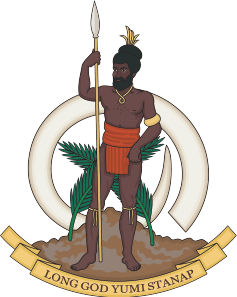SS President Coolidge
The ship, the legend
The SS President Coolidge has a very special place in the history of Espiritu Santo. She began as a luxury ocean liner upon completion in 1931. Some 10 years later she was acquired by the US War Department who began using her to transport men and equipment throughout the Pacific to reinforce US garrisons.
Initially transporting 125 injured Navy personnel from Hawaii, the Coolidge arrived in San Francisco on Christmas day in 1941. In January 1942 she was part of the first large convoy sent to Australia carrying troops, weapons, ammunition and supplies including P-40 fighters destined for the Philippines.
Arriving in Melbourne on February 1 1942, the Coolidge was still fitted out in her civilian guise. Later that year she was refitted and converted into a troop ship with many of her civilian fittings removed or boarded over to protect them. Her interior was then reconfigured to enable her to accommodate around 5,000 troops. Additionally the Coolidge had guns mounted on her and her beautiful black and white hull was repainted in a more traditional US Navy haze grey. At this time she was officially assigned to the US Navy by the War Shipping Administration.
Conversion
Following her conversion, the Coolidge continued transport duties throughout the South West Pacific theatre. Her ports of call included Bora Bora, Suva, Auckland, Wellington and of course Melbourne where in the Spring of 1942, she transported the President of the Philippines, Manuel Quezon to San Francisco. On October 6 1942, the Coolidge sailed from San Francisco for New Caledonia and the New Hebrides. On board were the 172nd Infantry Combat Team, 43rd Division and a harbour defence unit that were going to protect the new bomber base on Santo that was providing support for the Allied forces at Guadalcanal.
A Costly Omission
Upon reaching Santo, the Coolidge had to find safe passage to enter the harbour, due to the threat of Japanese submarine activity in the area. It was this very fact that led to the harbour entrances being heavily fortified by sea mines. However, the location of the undersea mines was omitted from the Coolidge’s sailing orders due to US navy regulations at the time. As she approached Santo on October 26, she hit a mine that exploded next to the ship’s engine room and seconds later a second mine exploded near her stern. The Captain of the Coolidge, Henry Nelson, knew immediately the ship was in danger of sinking, so he deliberately ran her aground in the shallowest water he could reach before the ship began to sink.
Abandon Ship
The 5,340 troops and crew were ordered to abandon ship. Given the shallow waters surrounding the Coolidge, many of the men on board simply walked ashore in a very calm manner, believing the ship was safely grounded. However, the Coolidge didn’t end up where Captain Nelson intended and was stuck fast on a coral reef. While the troops made it ashore, the Coolidge was still in grave danger of being lost. Not long after she ran aground, the Coolidge listed heavily before slipping down into the shipping channel.
There were just two casualties of the sinking of the Coolidge. Fireman Robert Reid, who was in the engine room at the time the ship struck the first mine. And Captain Elwood J Euart, the namesake of the association bringing the Museum to life.
A Hero Is Made
Captain Euart of the 103rd Field Artillery Regiment, was one of the 5,340 who made it ashore after the Coolidge ran aground. But on hearing there were men still trapped below decks, Euart returned to the ship and successfully rescued the men. However, the sheer effort of pulling the men up and out of the ship on a rope had left Euart exhausted. By the time it was his turn to get out, he didn’t have the strength in his arms to pull himself out and he went down with the ship.
A World Heritage Site
The Coolidge is now regarded as the most accessible shipwreck in the world for divers, for a ship of its size and type. In fact due to its location, depth, accessibility and the visibility of the water it lies in, it was named one of the top ten dive spots in the world.




